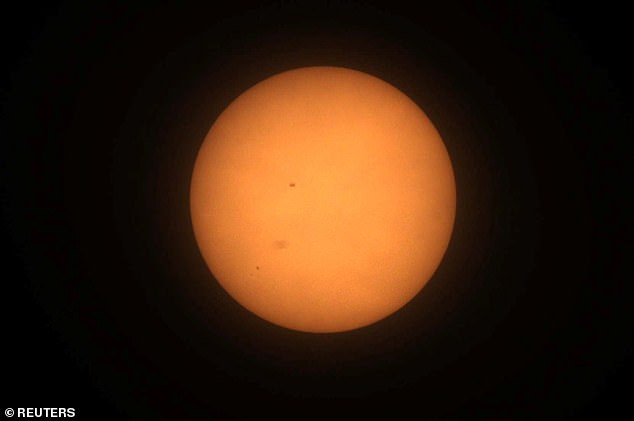<!–
<!–
<!– <!–
<!–
<!–
<!–
The moon has begun to block the sun as a partial eclipse begins in some parts of Mexico.
Thousands of people have packed cities along the ‘path of totality’ of the total solar eclipse, where it could be visible for up to four minutes, starting in Mexico and moving through Texas, where it will travel to New England and end in Canada.
Anywhere along the path of totality, people will see a partial eclipse followed by the total eclipse, and then a partial eclipse again.

A partial eclipse has begun in Mazatlán, Mexico


The sun is seen from Mazatlán before a total solar eclipse


People gather and wait to observe a total solar eclipse in Mazatlán, Mexico
Although the newly announced forecasts for Monday are ominous, suggesting thunderstorms and cloud cover that could limit visibility, thrill seekers are not deterred.
The Lone Star State will be the first state to see the celestial event around 1:27 pm ET, then Oklahoma is next around 1:45 pm CT, followed by Arkansas at 1:51 pm ET and Missouri about five minutes later.
Illinois is next in line in the path of totality, with Carbondale experiencing the solar eclipse around 1:59 p.m. CT and Paducah, Kentucky, about a minute later.
And Evansville, Indiana at 2:02 CT and then Ohio is expected to witness it around 3:13 pm ET.
State officials have estimated that up to 556,000 people will visit the Buckeye State.
Erie, Pennsylvania, is next, with the solar eclipse scheduled for 3:16 p.m. ET, followed by Buffalo, New York, around 3:18 p.m. ET.
The road will continue north, arriving in Burlington, Vermont at 3:26 pm ET, Lancaster, New Hampshire at 3:27 pm ET, and Caribou, Maine at 3:32 pm ET.
The National Weather Service predicts that northern New England will be the best place for a clear view of the total solar eclipse on Monday afternoon.
Forecasters said South Texas will see increased cloud cover before the arrival of the solar eclipse.
Other places in between are said to have a good chance of clouds at various levels, although places across Arkansas to the Midwest could see cloud breaks or high, thin clouds during the time of totality.
NASA’s Eclipse Soundscapes Project will use thousands of volunteers across the United States to help collect data from Monday’s celestial sensation.
Nearly 2,500 people have signed up to complete written multi-sensory reports on animal behavior and human reactions throughout the event.
